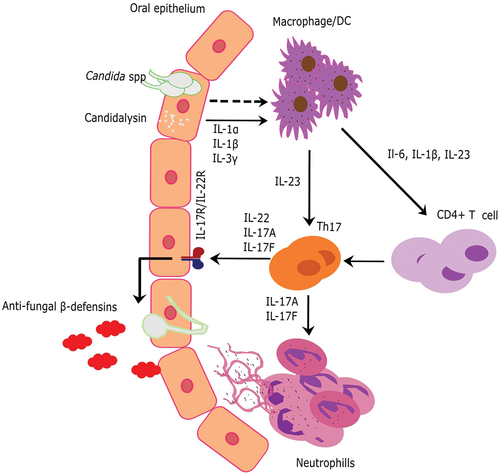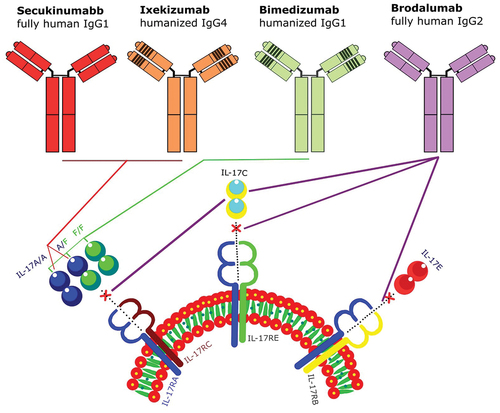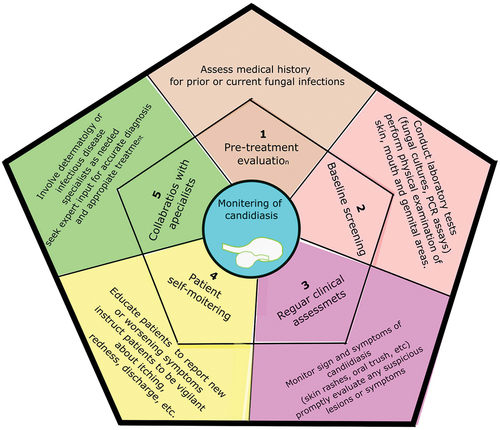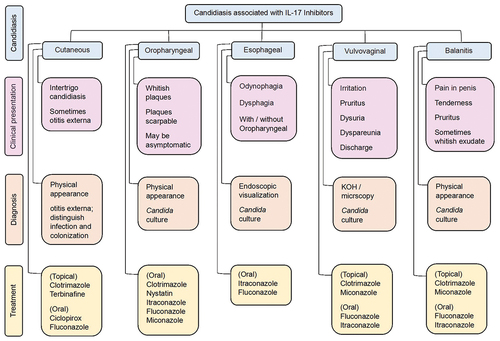Figures & data
Figure 1. Model of oral candidiasis and the immune system’s response for clearing Candida species. In response to Candida species, macrophages are activated, which recruit CD4+T cells or TH17 cells through various cytokines, in order to activate neutrophils or release β-defensin to clear Candida infection.




